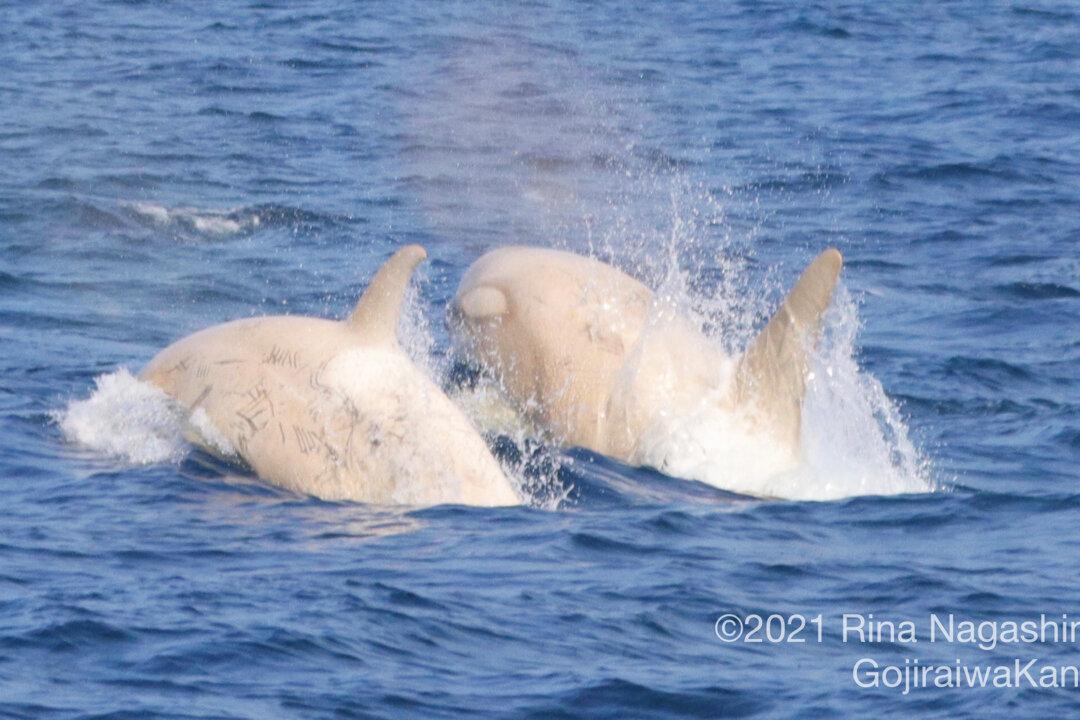In what might be considered a very rare sighting, whale watchers off the coast of Japan spotted two white orcas swimming side by side, with one of them even being unknown to the crew, amid a pod of 10 orcas.
On July 24, three crew members, the boat’s captain, and about 40 guests were exploring a 20-mile stretch of water in the Nemuro Strait between Rausu—a UNESCO World Natural Heritage site—and Kunashiri Island, Mai Ogawa of Gojiraiwa-Kanko tour company explained.





